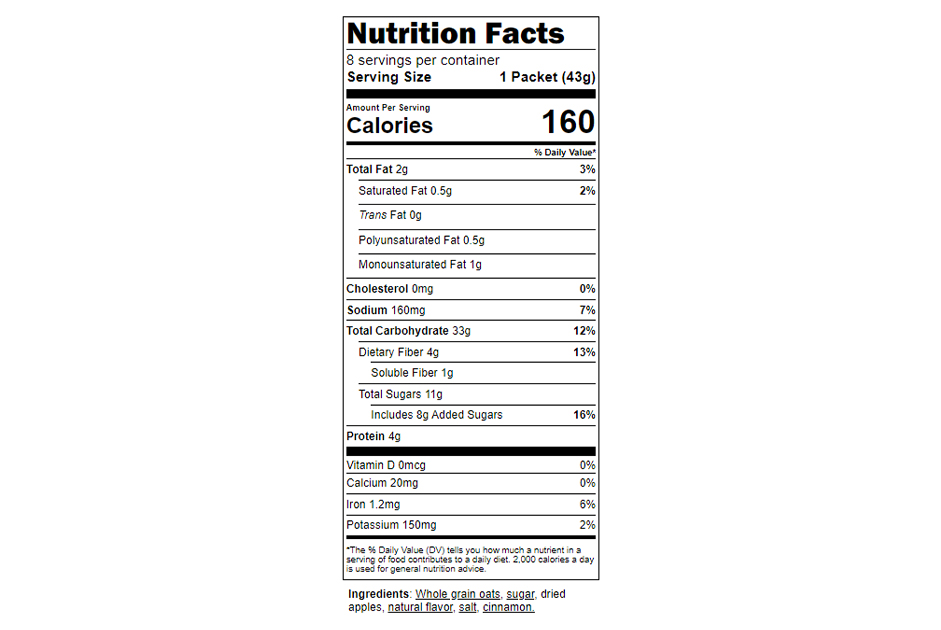Reading the nutrition facts label and ingredients list can help you make quick, informed decisions so that you can select healthier options. Making educated health choices can help prevent and manage chronic conditions such as high blood pressure, diabetes and high cholesterol. Keep reading to find out how to stay empowered and take control of your health through reading the nutrition facts label and the ingredients list.
Nutrition Facts Label
The nutrition facts label can be tricky to read, but with the right tools, we can learn it and make more knowledgeable decisions while we are at the grocery store!
Here is a step-by-step guide to reading the nutrition facts label:
- Start by looking at the serving size and servings per container. Serving sizes are standardized to make it easier to compare one product to another. The serving size now reflects the amount that people typically eat or drink of that particular food. It is also important to look at the servings per container, you might be surprised that many foods have more than one serving in the package/container.
- If a product has two servings per container, but you eat the whole container, then you have to multiply all the nutrients in the food label by two. For example, looking at the sample nutrition facts, if you eat two servings of this item, you would have eight grams of protein (instead of four grams of protein if you were to have one serving).
- There are a few nutrients that we want to limit, these include: saturated fat, sodium and added sugar. Eating too many of these nutrients over a long period of time can lead to health conditions. It is hard to avoid these completely, and it is okay to have foods that may not be as nutrient dense once in a while. Every food fits!
- Nutrients that you want to focus on getting more of are dietary fiber, vitamin D, calcium, iron and potassium. Dietary fiber aids in regular bowel movements and lowers blood glucose and cholesterol levels. Micronutrients are essential for many other beneficial functions in our bodies.
Reading the Ingredients List
The ingredients list can be even trickier for some people. There can often be ingredients that you have never heard of, but does that mean they are “bad” for you? Some ingredients go by different names than you’d expect. Some vitamins and minerals may go by their scientific name such as ascorbic acid (vitamin c) or alpha tocopherol (vitamin E). Ingredients such as carrageenan, xanthan gum or lecithin are used to thicken or emulsify. I always recommend researching the “hard-to-read” ingredients in products before deciding if a food is “good” or “bad” for you. You may just be surprised by the functionality of an ingredient and which ingredients are unnecessary!
Tip: The ingredients that weigh the most in the food are listed first in the ingredients list.

Nutrition label attached in is from Children’s Wisconsin (link: https://childrenswi.org/en/publications/teaching-sheet/clinical%20nutrition/1262-how%20to%20read%20food%20labels)



















